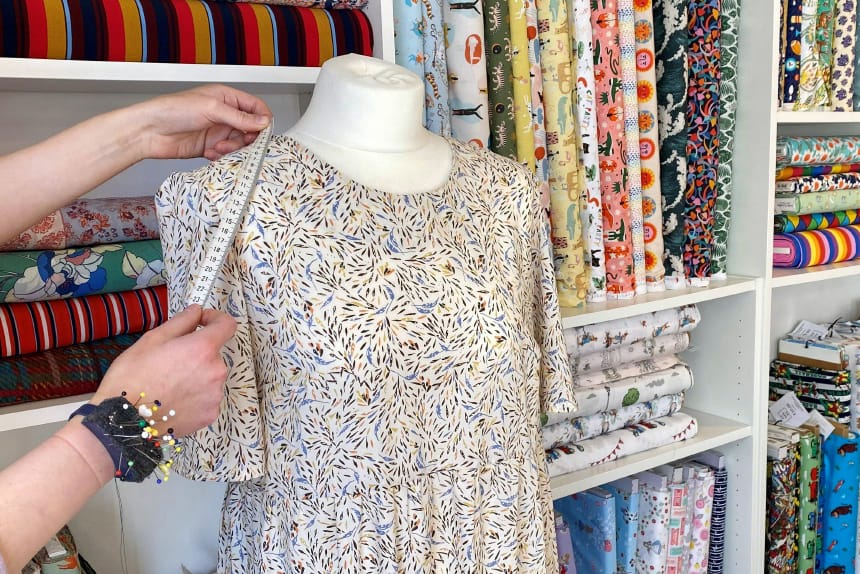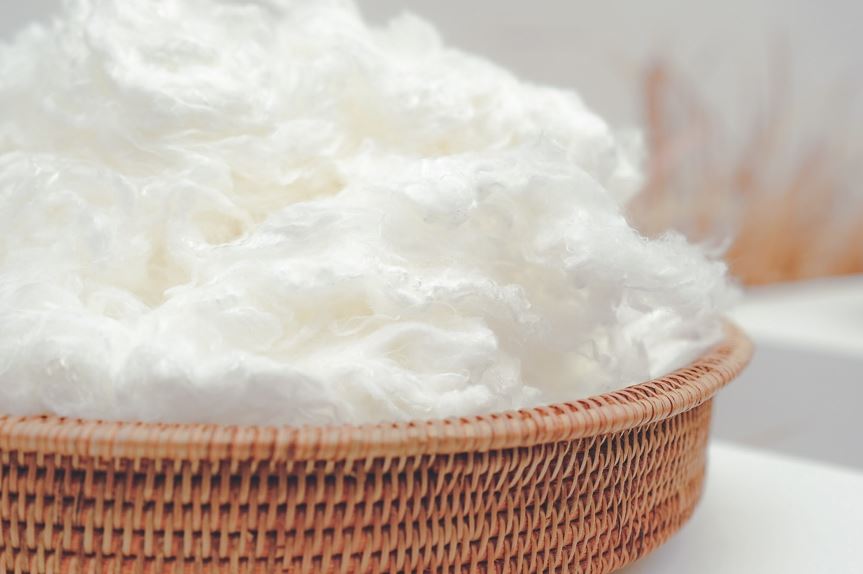- Home
- Blogs
- FabCouture
- Viscose Fabric: Everything You Need to Know
- Viscose Fabr...
Viscose Fabric: Everything You Need to Know
- By FabCouture
- • Jun 28, 2024

Viscose, also known as rayon, has become a staple in the fashion world. As a semi-synthetic fabric, it has gained popularity for its versatility and silk-like qualities. But what exactly is viscose, where does it come from, and what makes it so special?
What is Viscose?
Viscose is a semi-synthetic fabric derived from cellulose fibers extracted from trees like pine, bamboo, and eucalyptus. It was created as a cheaper alternative to silk, offering a similar soft feel and luxurious drape.
How Viscose is Made

The production of viscose involves extracting cellulose xanthate from wood pulp. This substance is then processed into a viscous liquid, which undergoes several chemical treatments to form fibers that mimic the properties of natural fabrics like silk and cotton.
Explore Fabcouture's extensive collection of viscose fabrics to discover a variety of prints and textures.
Viscose vs. Rayon: What’s the Difference?
While often used interchangeably, viscose is actually a type of rayon. Rayon itself can be produced in several forms, including modal and lyocell, each with unique properties based on the specific manufacturing process.
History of Viscose Rayon
Viscose rayon was first developed in 1883 by Edward John Bevan and Charles Frederick Cross. It was introduced as a cost-effective alternative to silk, and the first commercial production began in 1905. The term "rayon" was adopted in 1924, while "viscose" became synonymous with the fabric in Europe.
Characteristics of Viscose Fabric
Viscose fabric is celebrated for its soft, silk-like touch and cotton-like comfort. Its versatility makes it a favorite among designers, offering a luxurious appearance at an affordable price. Key characteristics include:
- Softness: Feels smooth and luxurious.
- Breathability: Keeps you cool in hot weather and provides basic insulation in cooler temperatures.
- Versatility: Suitable for a wide range of garments and applications.
- Drapability: Falls beautifully, perfect for creating elegant drapes and movements in clothing.
- Color Retention: Easily dyed, maintaining vibrant colors even after multiple washes.
- Hypoallergenic: Gentle on the skin, ideal for those with sensitivities.
Uses and Applications

Viscose is widely used in the fashion industry for its comfort and aesthetic appeal. Common applications include:
- Clothing: Blouses, shirts, dresses, and sportswear.
- Home Textiles: Curtains, tablecloths, bed linens, and blankets.
- Accessories: Scarves and other small items.
- Specialty Items: Feminine hygiene products, tyre cords, and more.
Viscose Compared to Other Materials
- Viscose vs. Silk: Both share a luxurious feel, but viscose is more affordable and versatile.
- Viscose vs. Cotton: Similar in comfort, but viscose offers a silk-like drape and sheen.
- Viscose vs. Modal: Both are made from wood cellulose, but modal is slightly more durable and breathable.
- Viscose vs. Polyester: Viscose is derived from natural sources, making it more environmentally friendly compared to synthetic polyester.
Is Viscose Sustainable?
Despite being plant-based, the production of viscose involves chemical processes that can harm the environment. The extraction of cellulose contributes to deforestation, and the solvents used can be harmful. Therefore, while viscose has some eco-friendly aspects, its overall sustainability is still a concern.
How to Care for Viscose Fabric
Viscose requires careful handling, especially when wet, as it loses strength. Here are some tips for maintaining your viscose garments:
- Dry Clean: Preferably, have viscose items dry cleaned.
- Hand Wash: If washing at home, use cold water and mild detergent. Gently work the fabric and avoid wringing.
- Air Dry: Lay flat or hang to dry, avoiding direct sunlight.
- Handle Stains Carefully: Act quickly on stains, as viscose absorbs colors easily.
Final Thoughts
Viscose is a fantastic choice for those seeking a soft, affordable fabric with a luxurious feel. With proper care, your viscose garments can remain beautiful and durable for years.
Explore Fabcouture’s curated collection of viscose fabrics and find the perfect addition to your wardrobe.
Leave a Comment
Blogs
Popular Posts
Newletter
Thanks for subscribe.

Fabcouture is an online fabric store to satisfy all your couture fabrics cravings for fabric connoisseurs. We delight in the fact that we source...
0 Comment